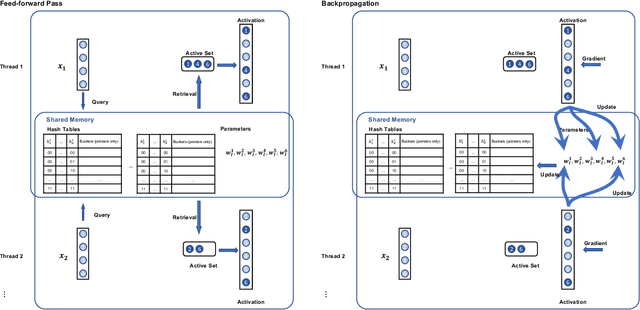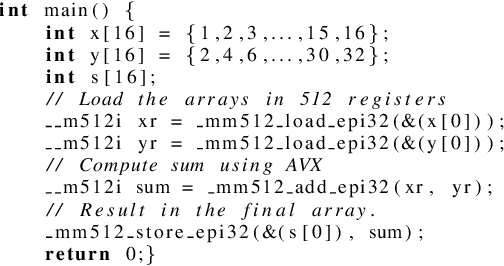Mengnan Zhao
AdvAnchor: Enhancing Diffusion Model Unlearning with Adversarial Anchors
Dec 28, 2024Abstract:Security concerns surrounding text-to-image diffusion models have driven researchers to unlearn inappropriate concepts through fine-tuning. Recent fine-tuning methods typically align the prediction distributions of unsafe prompts with those of predefined text anchors. However, these techniques exhibit a considerable performance trade-off between eliminating undesirable concepts and preserving other concepts. In this paper, we systematically analyze the impact of diverse text anchors on unlearning performance. Guided by this analysis, we propose AdvAnchor, a novel approach that generates adversarial anchors to alleviate the trade-off issue. These adversarial anchors are crafted to closely resemble the embeddings of undesirable concepts to maintain overall model performance, while selectively excluding defining attributes of these concepts for effective erasure. Extensive experiments demonstrate that AdvAnchor outperforms state-of-the-art methods. Our code is publicly available at https://anonymous.4open.science/r/AdvAnchor.
Adversarial Training: A Survey
Oct 19, 2024Abstract:Adversarial training (AT) refers to integrating adversarial examples -- inputs altered with imperceptible perturbations that can significantly impact model predictions -- into the training process. Recent studies have demonstrated the effectiveness of AT in improving the robustness of deep neural networks against diverse adversarial attacks. However, a comprehensive overview of these developments is still missing. This survey addresses this gap by reviewing a broad range of recent and representative studies. Specifically, we first describe the implementation procedures and practical applications of AT, followed by a comprehensive review of AT techniques from three perspectives: data enhancement, network design, and training configurations. Lastly, we discuss common challenges in AT and propose several promising directions for future research.
Catastrophic Overfitting: A Potential Blessing in Disguise
Feb 28, 2024Abstract:Fast Adversarial Training (FAT) has gained increasing attention within the research community owing to its efficacy in improving adversarial robustness. Particularly noteworthy is the challenge posed by catastrophic overfitting (CO) in this field. Although existing FAT approaches have made strides in mitigating CO, the ascent of adversarial robustness occurs with a non-negligible decline in classification accuracy on clean samples. To tackle this issue, we initially employ the feature activation differences between clean and adversarial examples to analyze the underlying causes of CO. Intriguingly, our findings reveal that CO can be attributed to the feature coverage induced by a few specific pathways. By intentionally manipulating feature activation differences in these pathways with well-designed regularization terms, we can effectively mitigate and induce CO, providing further evidence for this observation. Notably, models trained stably with these terms exhibit superior performance compared to prior FAT work. On this basis, we harness CO to achieve `attack obfuscation', aiming to bolster model performance. Consequently, the models suffering from CO can attain optimal classification accuracy on both clean and adversarial data when adding random noise to inputs during evaluation. We also validate their robustness against transferred adversarial examples and the necessity of inducing CO to improve robustness. Hence, CO may not be a problem that has to be solved.
Separable Multi-Concept Erasure from Diffusion Models
Feb 03, 2024



Abstract:Large-scale diffusion models, known for their impressive image generation capabilities, have raised concerns among researchers regarding social impacts, such as the imitation of copyrighted artistic styles. In response, existing approaches turn to machine unlearning techniques to eliminate unsafe concepts from pre-trained models. However, these methods compromise the generative performance and neglect the coupling among multi-concept erasures, as well as the concept restoration problem. To address these issues, we propose a Separable Multi-concept Eraser (SepME), which mainly includes two parts: the generation of concept-irrelevant representations and the weight decoupling. The former aims to avoid unlearning substantial information that is irrelevant to forgotten concepts. The latter separates optimizable model weights, making each weight increment correspond to a specific concept erasure without affecting generative performance on other concepts. Specifically, the weight increment for erasing a specified concept is formulated as a linear combination of solutions calculated based on other known undesirable concepts. Extensive experiments indicate the efficacy of our approach in eliminating concepts, preserving model performance, and offering flexibility in the erasure or recovery of various concepts.
EipFormer: Emphasizing Instance Positions in 3D Instance Segmentation
Dec 09, 2023Abstract:3D instance segmentation plays a crucial role in comprehending 3D scenes. Despite recent advancements in this field, existing approaches exhibit certain limitations. These methods often rely on fixed instance positions obtained from sampled representative points in vast 3D point clouds, using center prediction or farthest point sampling. However, these selected positions may deviate from actual instance centers, posing challenges in precisely grouping instances. Moreover, the common practice of grouping candidate instances from a single type of coordinates introduces difficulties in identifying neighboring instances or incorporating edge points. To tackle these issues, we present a novel Transformer-based architecture, EipFormer, which comprises progressive aggregation and dual position embedding. The progressive aggregation mechanism leverages instance positions to refine instance proposals. It enhances the initial instance positions through weighted farthest point sampling and further refines the instance positions and proposals using aggregation averaging and center matching. Additionally, dual position embedding superposes the original and centralized position embeddings, thereby enhancing the model performance in distinguishing adjacent instances. Extensive experiments on popular datasets demonstrate that EipFormer achieves superior or comparable performance compared to state-of-the-art approaches.
Fast Adversarial Training with Smooth Convergence
Aug 24, 2023Abstract:Fast adversarial training (FAT) is beneficial for improving the adversarial robustness of neural networks. However, previous FAT work has encountered a significant issue known as catastrophic overfitting when dealing with large perturbation budgets, \ie the adversarial robustness of models declines to near zero during training. To address this, we analyze the training process of prior FAT work and observe that catastrophic overfitting is accompanied by the appearance of loss convergence outliers. Therefore, we argue a moderately smooth loss convergence process will be a stable FAT process that solves catastrophic overfitting. To obtain a smooth loss convergence process, we propose a novel oscillatory constraint (dubbed ConvergeSmooth) to limit the loss difference between adjacent epochs. The convergence stride of ConvergeSmooth is introduced to balance convergence and smoothing. Likewise, we design weight centralization without introducing additional hyperparameters other than the loss balance coefficient. Our proposed methods are attack-agnostic and thus can improve the training stability of various FAT techniques. Extensive experiments on popular datasets show that the proposed methods efficiently avoid catastrophic overfitting and outperform all previous FAT methods. Code is available at \url{https://github.com/FAT-CS/ConvergeSmooth}.
Temporal Knowledge Graph Reasoning Triggered by Memories
Nov 03, 2021



Abstract:Inferring missing facts in temporal knowledge graphs is a critical task and has been widely explored. Extrapolation in temporal reasoning tasks is more challenging and gradually attracts the attention of researchers since no direct history facts for prediction. Previous works attempted to apply evolutionary representation learning to solve the extrapolation problem. However, these techniques do not explicitly leverage various time-aware attribute representations, i.e. the reasoning performance is significantly affected by the history length. To alleviate the time dependence when reasoning future missing facts, we propose a memory-triggered decision-making (MTDM) network, which incorporates transient memories, long-short-term memories, and deep memories. Specifically, the transient learning network considers transient memories as a static knowledge graph, and the time-aware recurrent evolution network learns representations through a sequence of recurrent evolution units from long-short-term memories. Each evolution unit consists of a structural encoder to aggregate edge information, a time encoder with a gating unit to update attribute representations of entities. MTDM utilizes the crafted residual multi-relational aggregator as the structural encoder to solve the multi-hop coverage problem. We also introduce the dissolution learning constraint for better understanding the event dissolution process. Extensive experiments demonstrate the MTDM alleviates the history dependence and achieves state-of-the-art prediction performance. Moreover, compared with the most advanced baseline, MTDM shows a faster convergence speed and training speed.
Accelerating SLIDE Deep Learning on Modern CPUs: Vectorization, Quantizations, Memory Optimizations, and More
Mar 06, 2021



Abstract:Deep learning implementations on CPUs (Central Processing Units) are gaining more traction. Enhanced AI capabilities on commodity x86 architectures are commercially appealing due to the reuse of existing hardware and virtualization ease. A notable work in this direction is the SLIDE system. SLIDE is a C++ implementation of a sparse hash table based back-propagation, which was shown to be significantly faster than GPUs in training hundreds of million parameter neural models. In this paper, we argue that SLIDE's current implementation is sub-optimal and does not exploit several opportunities available in modern CPUs. In particular, we show how SLIDE's computations allow for a unique possibility of vectorization via AVX (Advanced Vector Extensions)-512. Furthermore, we highlight opportunities for different kinds of memory optimization and quantizations. Combining all of them, we obtain up to 7x speedup in the computations on the same hardware. Our experiments are focused on large (hundreds of millions of parameters) recommendation and NLP models. Our work highlights several novel perspectives and opportunities for implementing randomized algorithms for deep learning on modern CPUs. We provide the code and benchmark scripts at https://github.com/RUSH-LAB/SLIDE
A Constant-time Adaptive Negative Sampling
Dec 31, 2020



Abstract:Softmax classifiers with a very large number of classes naturally occur in many applications such as natural language processing and information retrieval. The calculation of full-softmax is very expensive from the computational and energy perspective. There have been a variety of sampling approaches to overcome this challenge, popularly known as negative sampling (NS). Ideally, NS should sample negative classes from a distribution that is dependent on the input data, the current parameters, and the correct positive class. Unfortunately, due to the dynamically updated parameters and data samples, there does not exist any sampling scheme that is truly adaptive and also samples the negative classes in constant time every iteration. Therefore, alternative heuristics like random sampling, static frequency-based sampling, or learning-based biased sampling, which primarily trade either the sampling cost or the adaptivity of samples per iteration, are adopted. In this paper, we show a class of distribution where the sampling scheme is truly adaptive and provably generates negative samples in constant time. Our implementation in C++ on commodity CPU is significantly faster, in terms of wall clock time, compared to the most optimized TensorFlow implementations of standard softmax or other sampling approaches on modern GPUs (V100s).
 Add to Chrome
Add to Chrome Add to Firefox
Add to Firefox Add to Edge
Add to Edge